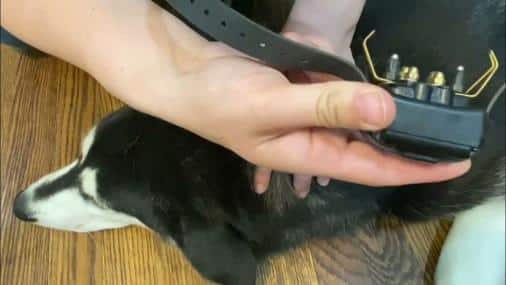Because dogs are furry creatures, training them requires the correct tools. Can you use shock collar for dog training? Shock collars are also known as electronic collars or e-collars. Yet, when responsibly and properly utilized, can also be a valuable training tool. In this article, we will discuss the best shock collars for thick fur dogs, taking into consideration factors like safety, effectiveness, and comfort.
Understanding Shock Collars
Shock collars are made to provide a mild electric stimulation to a dog’s neck as a corrective action. They serve many training purposes such as obedience training, behavior modification, and containment. To use a shock collar effectively, you must first understand your dog’s temperament, the training goals, and the best way to use the collar.
Why would you want the best shock collar for dogs with thick fur?
For example, Golden Retrievers, Siberian Huskies, and Bernese Mountain Dogs all have thick fur, which may need some adjustments when it comes to certain training tools. The thick fur can restrict the practicality and effectiveness of standard collars, making it difficult for the stimulation to reach the skin. As a result, it is important that you choose a dog training collar for thick fur to ensure the training is humane as well as effective.
Key Features to Look For
As you seek the best shock collar for dogs with thick fur, look out for the following features:
It is important to look for the one that comes with adjustable stimulation levels. It enables you to adjust the strength according to your dog’s sensitivity and fur thickness. A collar with a wide range can help you find the right balance to train without distressing.
Contact Points: The contact points (or prongs) of the collar should be sufficiently long so as to penetrate thick fur and come into contact with the skin. Certain collars feature removable prongs that are different lengths, so you can adjust the fit to suit your dog’s coat.
Durability & Waterproofing: Because dogs with thick fur tend to be more active/adventurous Choose a weatherproof collar that will hold up to being outdoors, rough play and tough conditions. Choose collars made with durable materials that will stand up to the test of time.
Distance: The distance of the shock collar may be important, depending on your training requirements. On the other hand, long range is great for large open space training. Some collars have ranges of up to 1,000 yards or more.
Rechargeable Battery: Consider getting a collar with a rechargeable battery for convenience and avoid the hassle of frequent battery changes. You will need good battery life too for long training sessions.
Best Shock Collars for Thick Coated Dogs
So, this is the list of top-rated best shock collars for thick fur dogs.
Garmin Delta XC Bundle — this collar is for serious trainers. It has a range of 1,000 yards and multiple stimulation levels. The long contact points are ideal for dogs with thick fur, and the collar is waterproof and durable. The Garmin Delta XC also comes with a training guide helping you start your training.
Educator E-Collar Remote Dog Training Collar: Using humane technology, this collar has a specially designed “lock and set” feature that prevents accidental stimulation. It has multiple adjustment stimulation, long contact points suitable for dogs with thick hair. The collar is fully waterproof and has an effective range of 1,000 yards.
Bousnic Dog Training Collar: This budget-friendly option comes with a number of training modes, including shock, vibration and beep. This collar has long contact points made for thick fur, and has a range of 1,000 feet. It’s also waterproof and rechargeable, so makes a practical implement for daily training.
Using Shock Collars Responsibly
Shock collars can work well, but you must use these electronic training collars responsibly. These tips will help you use it safely, and effectively:
Use Positive Reinforcement First: It’s essential to teach your dog fundamental commands before considering shock collar training, and this should be done through positive reinforcement. This will help them learn that the collar is associated with training and not punishment.
Only Use the Lowest Effective Setting: Find the lowest set point and add volts if necessary. The idea is to get your dog’s attention, not to hurt or scare him.
Shock Collar Usage Limitations: Reduce the duration of the use of shock collars. This needs to be part of a larger training strategy that incorporates positive reinforcement along with other training methods.
Watch Your Dog’s Response: Closely monitor how your dog reacts to the collar. If they display signs of distress or fear, you may need to re-evaluate your training methods.
Seek Expert Help: If you’re unsure whether shock collars are effective for your dog or feel uncomfortable doing it on your own, see a professional dog trainer or behaviorist to help you with this process.
Conclusion
When selecting the ideal shock collar for dogs with thick coats, you need to look into numerous features namely adjustable stimulation level, contact point length, durability, and range. Having the right collar can give you the advantage during training and allow your pup to understand your commands. Of course, you must use shock collars responsibly and they should not be a replacement for positive reinforcement, look out for your dog’s well-being while training the shock collar. Discover our platform, which features a wide variety of products at unbeatable prices. Buy from China. Don’t miss out on this opportunity—connect with us today to enjoy significant savings. By following a few fundamental principles, it is possible to accomplish successful training results without upsetting your dog’s health and happiness.
